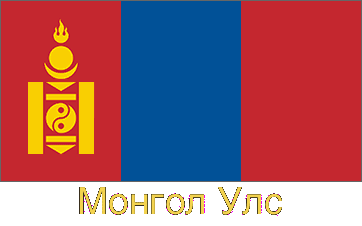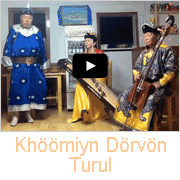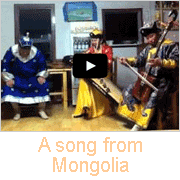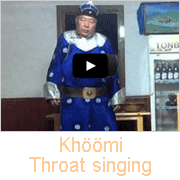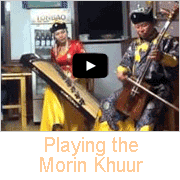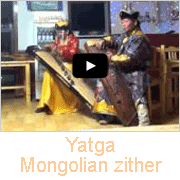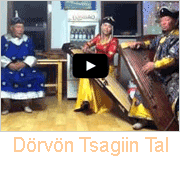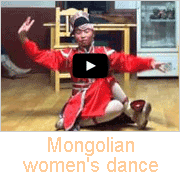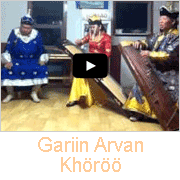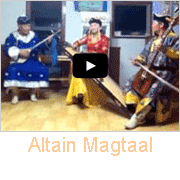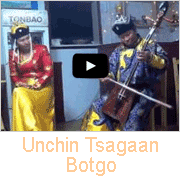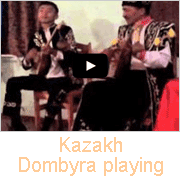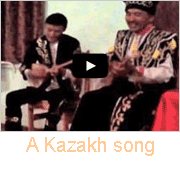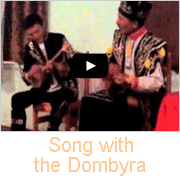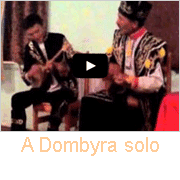Videos of Mongolian Music Videos, Mongolia
Mongolian Music Videos
Erdene Zuu monastery, built on the site of the old capital of Karakorum, is the first Buddhist monastery built in Mongolia. Although it was ruined in the late 1930s, its enclosing walls remained standing, and it is the most famous sight of Övörkhangai province in central Mongolia. Named after this landmark, the Erdene Zuu traditional folk group has acquired fame and made CDs of their songs.
The recordings here were made at a performance in the dining room of Mönkhsuuri “ger-camp” in Kharkhorin. They perform various songs, accompanying themselves on the Morin Khuur, a two-string fiddle with the carving of a horse head at the top of the pegbox. This instrument is considered a symbol of the country. The Yatga or Yatuga is a half-tube zither with a movable bridge and 21 strings, and the “Dombra” or “Dombyra”, a long-necked lute, is typical of the west and the Kazakh people. There is also “Khöömi” or “throat singing” Mongolian and Tuvan overtone singing, where two or more distinct pitches are sung simultaneously. It demonstrates the different sounds that can be made, using nose, tongue, throat and larynx, producing an almost whistling sound. A girl also gives a demonstration of a Mongolian woman’s dance.
In the far western province of Bayan-Ölgii, 90% of the population is of the Kazakh ethnicity, a Turkic people; Kazakhstan is not far away. Bokenbai and Kögershin, two Kazakh performers, sing Kazakh songs, accompanying themselves on the “dombyra”, the long-necked lute, the most famous Kazakh instrument, in the dining room of the Blue Wolf Travel and Ger camp in Ölgii. Bokenbai is a young man, and a DVD was made when he performed with Kögershin as a young boy, already a great talent, as they both are today.


